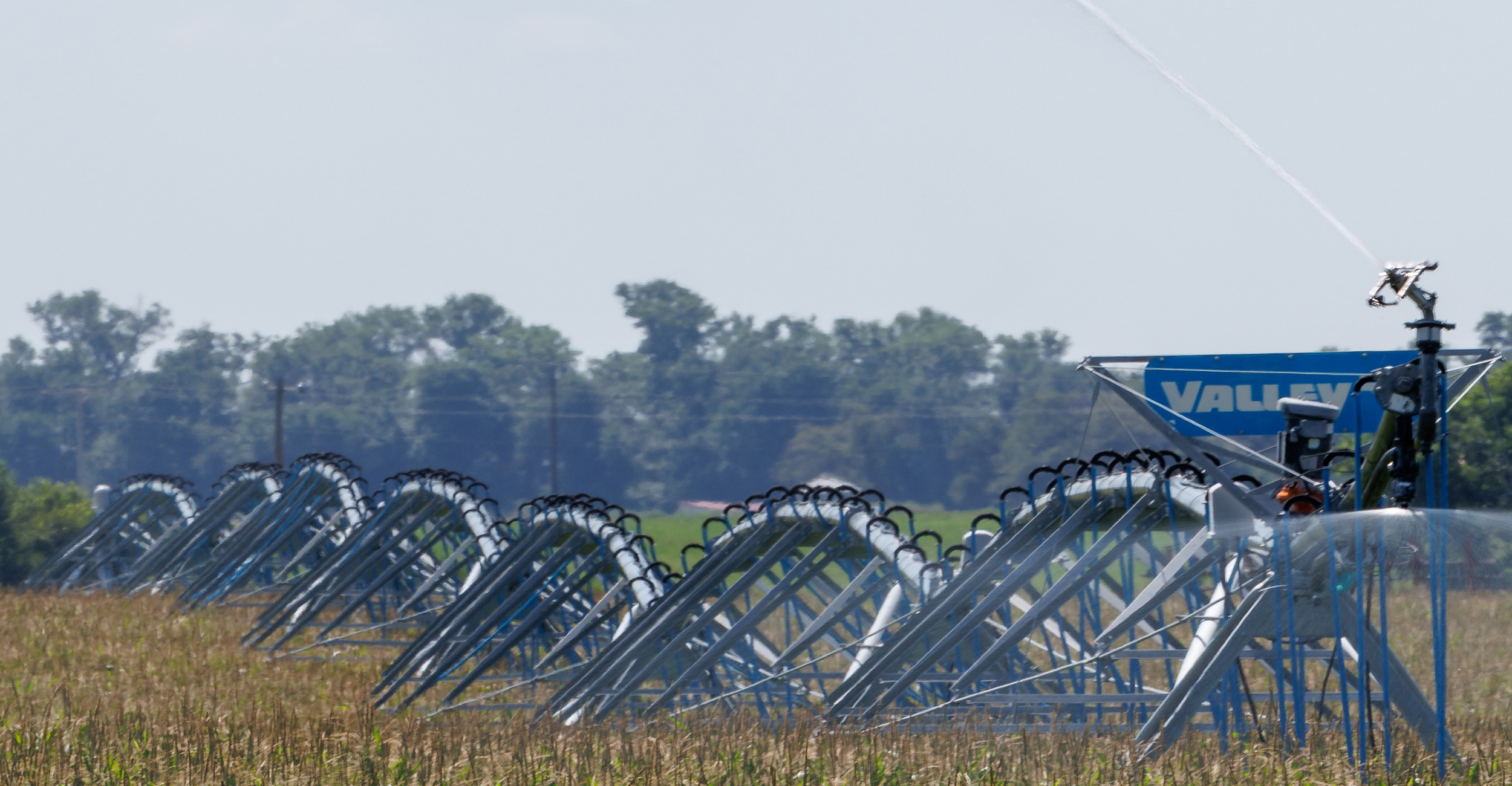
OSU assists in the search for sustainable irrigation solutions
Thursday, November 13, 2025
Media Contact: Dean Ruhl | Communications & Media Relations Specialist | 405-744-9152 | dean.ruhl@okstate.edu
At current rates, certain areas of the Ogallala Aquifer are estimated to run dry in the next 30 years.
It’s a daunting dilemma for producers who rely on the aquifer, a body of underground sand and gravel that is porous enough to transmit and store groundwater.
But it’s a problem Oklahoma State University, along with Kansas State University, Texas Tech University, California State University and NASA are attempting to solve. Through grant funding from the USDA Agriculture & Food Research Initiative’s Sustainable Agricultural Systems (SatRAP) Program, a transdisciplinary, five-year project kicked off this year, aiming to develop water-smart production systems.
“The ultimate goal is to sustain the Ogallala Aquifer and similar aquifers in the region,” said Dr. Kevin Wagner, director of the Oklahoma Water Resources Center at OSU.
Wagner is joined by OSU faculty colleagues Drs. Sumon Datta, Dayton Lambert, Lixia Lambert, Michael Long and Sumit Sharma on the project.
More than two dozen researchers across the universities are collaborating and are split into three teams: education and outreach, socio-economic and technology. KSU is the lead on the project, with OSU evaluating groundwater policy and economic impacts, working to enhance the use of new technologies in Oklahoma by developing new irrigation scheduling tools and delivering findings to producers and water managers through Extension programs and regional outreach.
OSU Extension’s Master Irrigator program will be vital during this project.
“Initially, the project will evaluate existing conditions,” Wagner said. “What are the existing policies and practices in each state, how have those changed and evolved over time and what are some possible innovations that can be implemented to help improve the aquifer?”
OSU will work with local producers to understand current perceptions of the aquifer’s condition and policies for managing it. They’ll conduct surveys to determine how different conservation efforts are perceived and which ones are most likely to be implemented.
“These surveys will allow us to better understand the adoption barriers, needed incentives and perceptions on various policies,” Wagner said. “Also, getting feedback on new technologies will help us make the technology more usable and ensure it is providing producers what is most needed to help them.”
The primary technology being addressed is OpenET, a satellite-based water data resource used to track evapotranspiration, or crop water use. The development of OpenET was supported by NASA.
Datta, an assistant professor of biosystems and agricultural engineering, heads OSU’s portion of the OpenET work on this project.
“OpenET offers several benefits to the SatRAP project by providing a transparent, standardized and scalable foundation for regional water management,” Datta said. “Its long-term, field-scale evapotranspiration data can be used to establish historical baselines and benchmark irrigation performance.”
Those historical baselines are something Wagner is excited about applying to future policy guidelines. The data from OpenET will enable OSU to assess whether policy changes and various programs implemented over the years were effective.
Wagner gives the example of well metering. In Kansas, producers are required to meter their wells. In Texas, there are groundwater conservation districts with different levels of regulation. But in Oklahoma, there are limited regulations for users.
With OpenET data, which will allow researchers to examine data from the 1980s to the present day, Wagner’s team will be able to determine whether groundwater management policies implemented over the years were effective.
“Having data comparing the effectiveness of various policies across these states will help inform decision makers on best approaches moving forward,” Wagner said.
The OpenET data will also benefit producers, Datta explains, enabling smarter irrigation practices in the future that require less water usage.
“We can directly observe field-scale evapotranspiration and get an estimate of plant available water in the root zone,” Datta said. “We can use this information to dynamically adjust irrigation demand and detect spatial variability of water stress inside the field.”
Stabilizing the aquifer is the main priority for OSU’s research team. Reports indicate that droughts and heat stress across the region will intensify over the next 50 years. Wagner notes some areas have less than 30 years left. Others have more than 200 years. The universities are working to apply a “Q-stable analysis,” a sustainable water usage calculation that identifies what pumping levels would be required to level off declines and extend the life of the aquifer.
“The whole focus is what reductions would be required to essentially level off the declines,” Wagner said. “Right now, there’s an angling downward trend in water levels. Can we flatten that trend out? What would that require and what would be the economic implications to farmers and the region?”
The ultimate goal of the project is sustainability.
“We hope to achieve sustainable water usage in the Ogallala,” Wagner said. “But what we’re going to do will have broad implications throughout the United States and potentially globally.”
